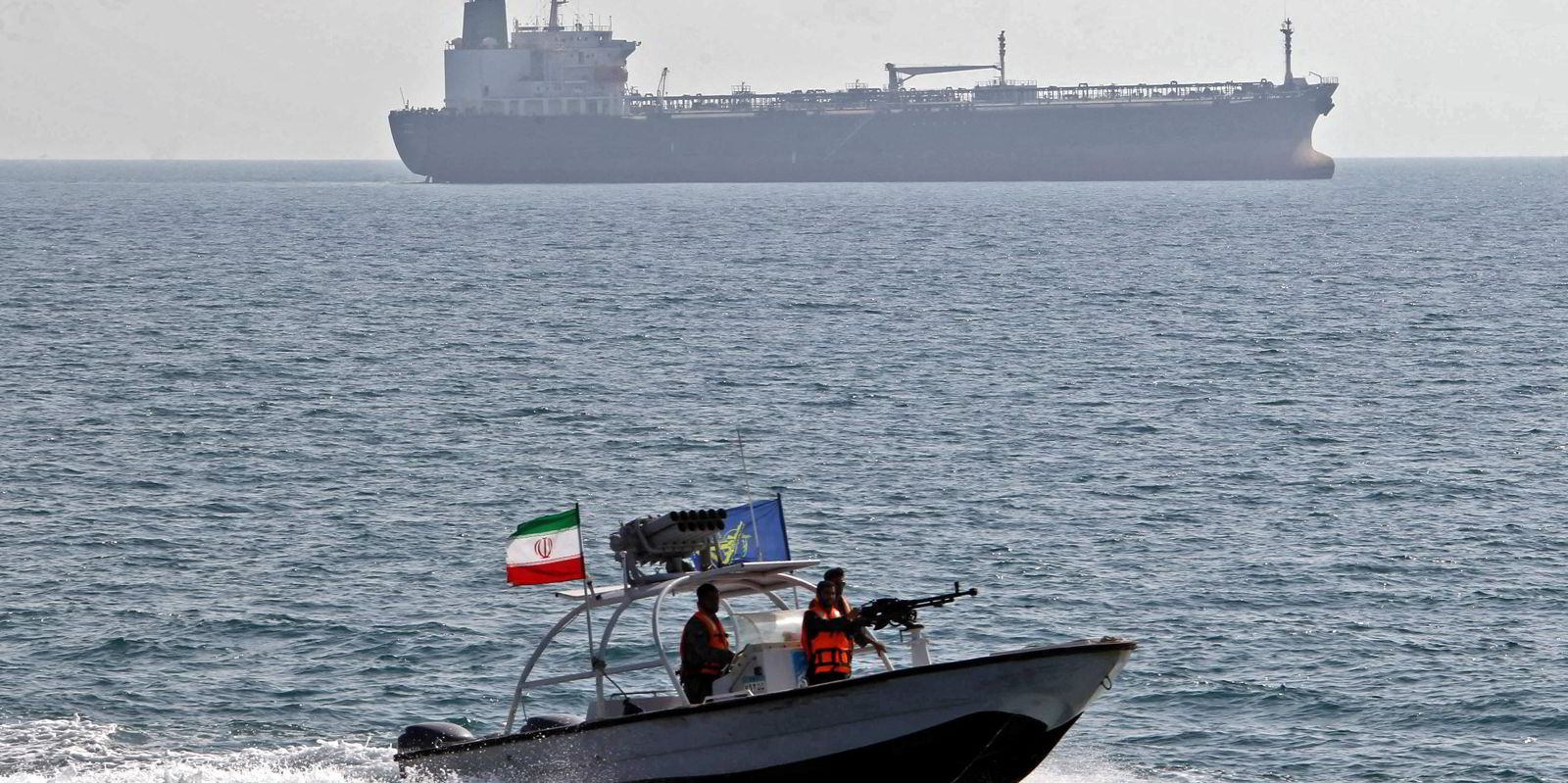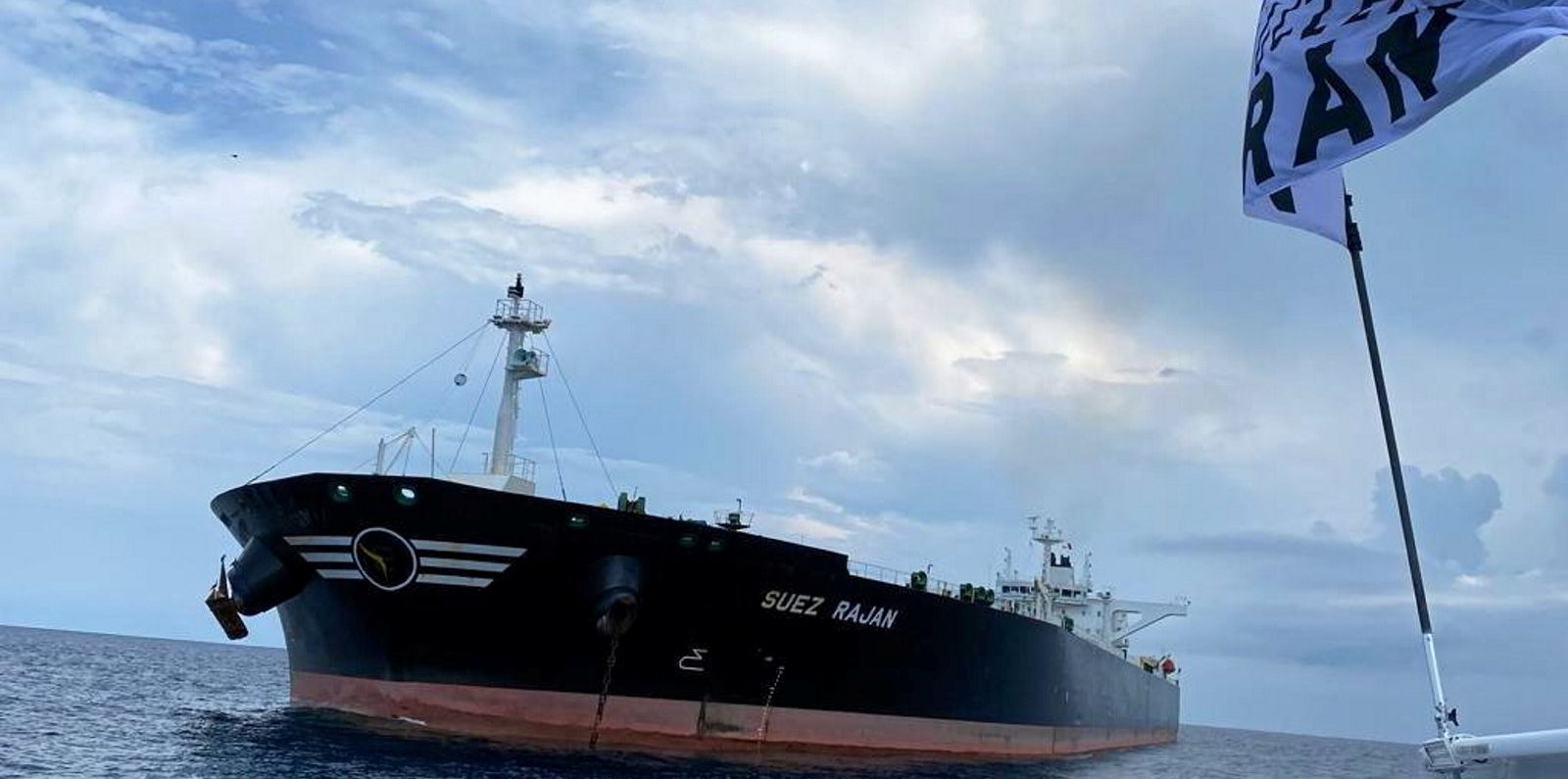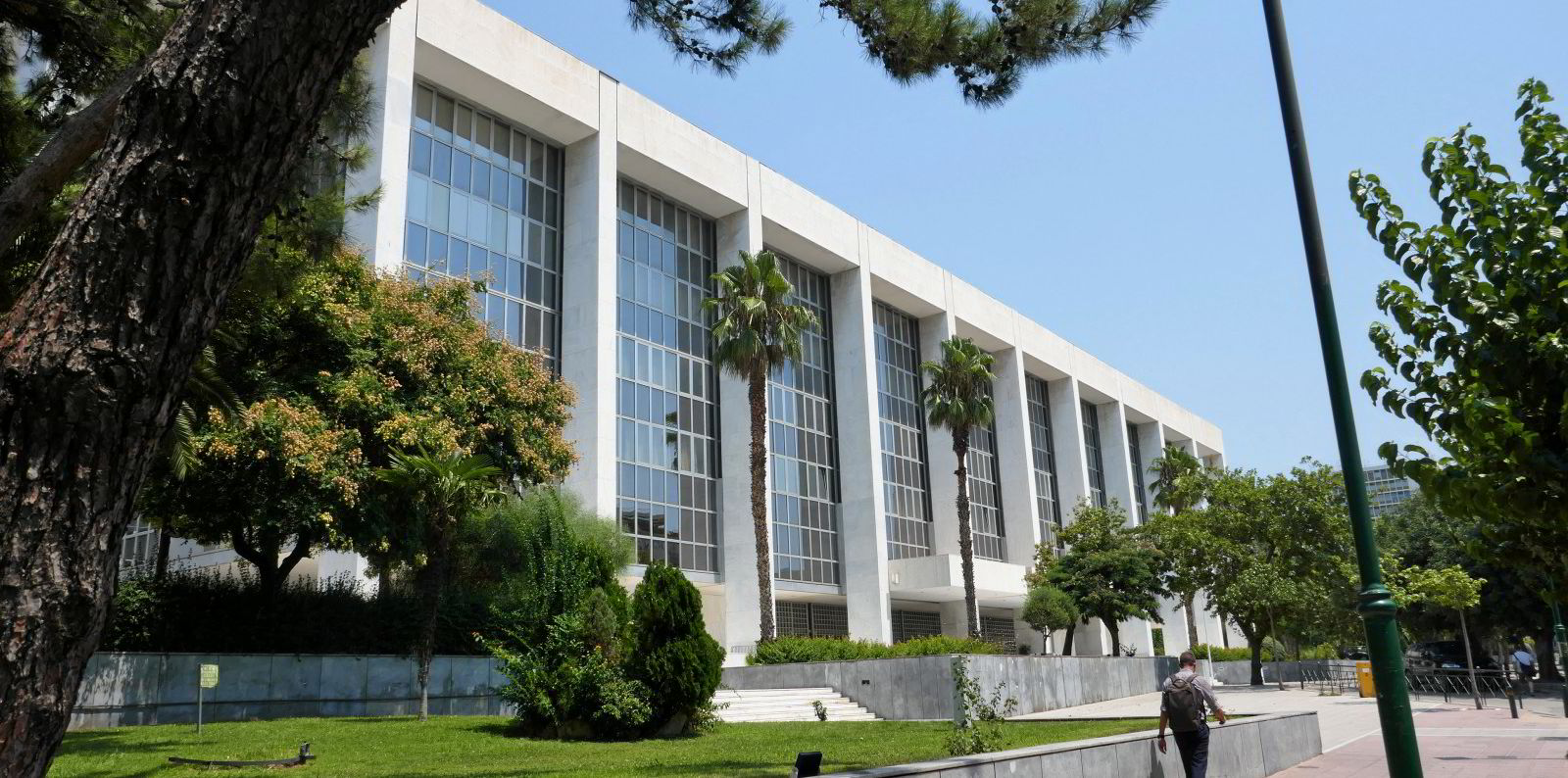Iran’s navy confirmed that its forces hijacked a laden tanker transiting the Gulf of Oman in reprisal for its owner’s cooperation with US authorities for seizing Iranian oil last year.
The move adds tension in Middle Eastern waters already troubled by Iran-backed Houthi rebel attacks in the Red Sea against commercial ships associated with Israel and its Western allies.
TradeWinds already reported earlier on Thursday about a dawn raid on the 159,000-dwt St Nikolas (built 2011) by a masked group of armed assailants who boarded the ship owned by Greece’s Empire Navigation.
The suspicion for the attack always lay with Iran, given the ship’s recent history.
Trading under its previous name of Suez Rajan, the suezmax was arrested by the US Department of Justice in Asia last year to seize 1m barrels of US-sanctioned Iranian crude on board.
In September, after the ship was transferred to Texas to discharge its cargo, Empire Navigation pleaded guilty in the US to trading sanctioned Iranian oil, stating that it worked “promptly and responsively” with Washington to resolve the matter.
Tehran had since waited until the ship approached its waters again to take revenge.
On Thursday, Iran’s official IRNA news agency confirmed that the St Nikolas was seized earlier in the day by Iranian forces, citing the public relations department of the navy.
According to IRNA, the action followed “a court order and the approval of the Ports & Shipping Organisation” and was carried out “by the strategic navy of the Islamic Republic of Iran army, in retaliation for oil theft by the American regime”.
The St Nikolas is now being transferred to an Iranian port for delivery to judicial authorities, IRNA added.
According to Empire Navigation, there are 19 seafarers on board — 18 Filipinos and one Greek.
The Stamatis Molaris-led company confirmed losing contact with the vessel at about 04:30 GMT. Contact had still not been re-established by 18:10 GMT, Empire Navigation said in a separate statement later in the day.
Chartered by Turkish state oil company Tupras, the St Nikolas was carrying around 145,000 tonnes of crude from Basrah, Iraq, to Aliaga, Turkey.
According to maritime security companies Ambrey Analytics, Diaplous and the UK Maritime Trade Operations, the ship was attacked 47 nautical miles (87 km) east of Sohar, Oman, by between four and six armed, masked personnel in military uniforms.
As soon as they boarded the tanker, the individuals covered the vessel’s cameras, Diaplous said.
According to Ambrey, the St Nikolas was moving at 11.4 knots and continued to move at that speed in a steady direction an hour into the reported time of boarding.
After that, it changed direction to port and increased speed to 12.9 knots.
The AIS is off, but Ambrey said it was heading in the direction of Bandar-e-Jask, Iran.
Long history of reprisals
Iran has a history of detaining ships in retaliation to actions against it by the US or others.
Tehran last year already responded to the Suez Rajan seizure with a retaliatory seizure of its own, grabbing the Chevron-chartered, 159,000-dwt suezmax tanker Advantage Sweet (built 2012) in April, which is still in Iranian custody.
The same applies to the 309,000-dwt Greek-owned VLCC Niovi (built 2005), even though the background of that seizure remains unclear.
In June 2022, Iran seized two Greek suezmaxes in retaliation for Greece detaining an Iranian oil cargo on the Russian-controlled 115,400-dwt aframax Lana (built 2003), at the behest of the US.
After paying a $2.4m fine to the US in September and firing the employee who facilitated the sanctions violation, Empire Navigation regained control over the Suez Rajan.
Resuming trade as the St Nikolas, the ship passed through the Suez Canal in November with an oil cargo heading to Singapore, according to Kpler tracking data.
It ballasted back to Basrah this month in its first voyage to the Middle East Gulf since the US seizure. It was boarded in the Gulf of Oman as it left the area.
“If you cause them harm, the Iranians never forget,” one Greek shipping player commented to TradeWinds.
Gary Dixon and Yannick Guerry contributed to this article





